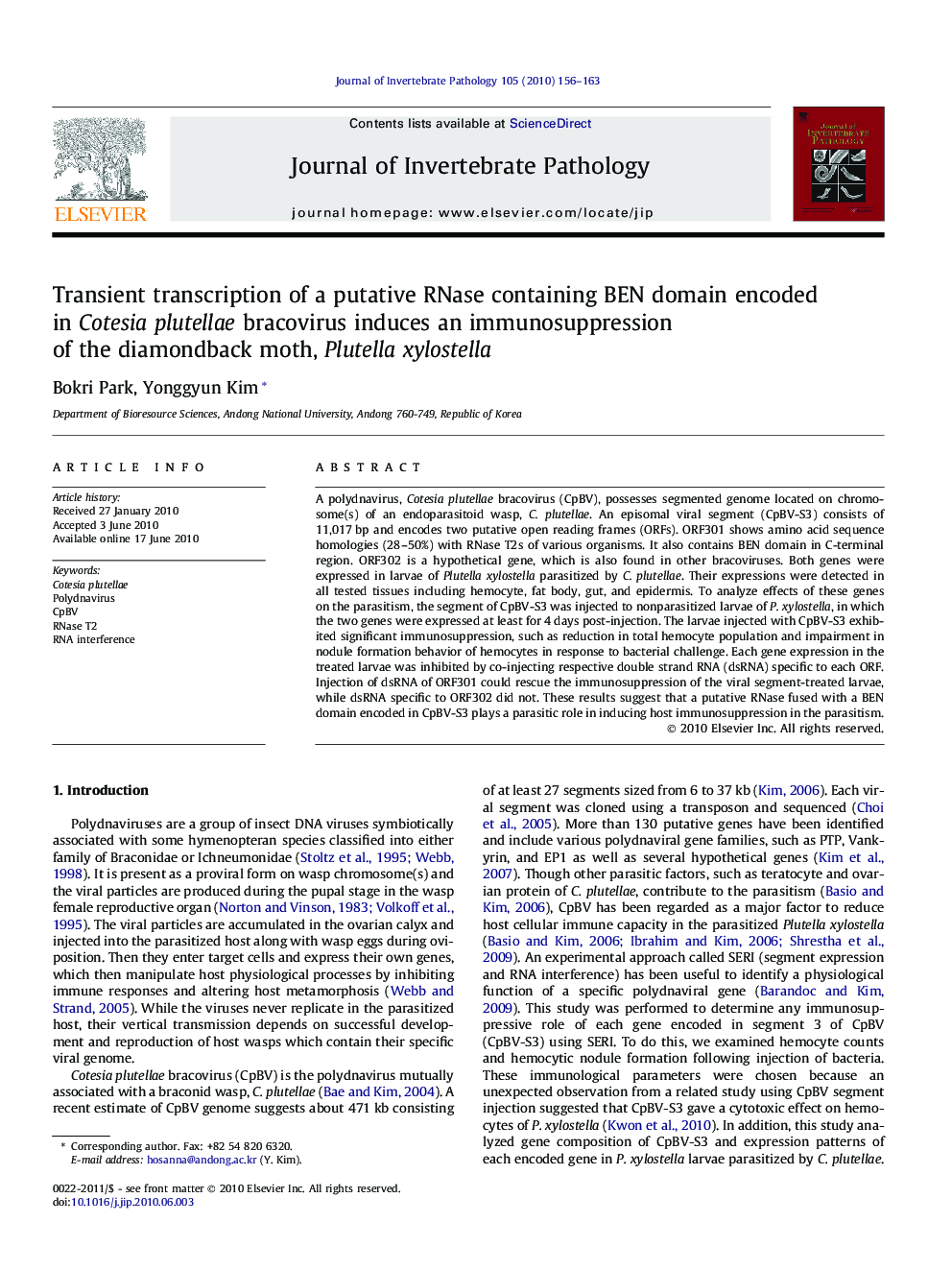| Article ID | Journal | Published Year | Pages | File Type |
|---|---|---|---|---|
| 4558132 | Journal of Invertebrate Pathology | 2010 | 8 Pages |
A polydnavirus, Cotesia plutellae bracovirus (CpBV), possesses segmented genome located on chromosome(s) of an endoparasitoid wasp, C. plutellae. An episomal viral segment (CpBV-S3) consists of 11,017 bp and encodes two putative open reading frames (ORFs). ORF301 shows amino acid sequence homologies (28–50%) with RNase T2s of various organisms. It also contains BEN domain in C-terminal region. ORF302 is a hypothetical gene, which is also found in other bracoviruses. Both genes were expressed in larvae of Plutella xylostella parasitized by C. plutellae. Their expressions were detected in all tested tissues including hemocyte, fat body, gut, and epidermis. To analyze effects of these genes on the parasitism, the segment of CpBV-S3 was injected to nonparasitized larvae of P. xylostella, in which the two genes were expressed at least for 4 days post-injection. The larvae injected with CpBV-S3 exhibited significant immunosuppression, such as reduction in total hemocyte population and impairment in nodule formation behavior of hemocytes in response to bacterial challenge. Each gene expression in the treated larvae was inhibited by co-injecting respective double strand RNA (dsRNA) specific to each ORF. Injection of dsRNA of ORF301 could rescue the immunosuppression of the viral segment-treated larvae, while dsRNA specific to ORF302 did not. These results suggest that a putative RNase fused with a BEN domain encoded in CpBV-S3 plays a parasitic role in inducing host immunosuppression in the parasitism.
